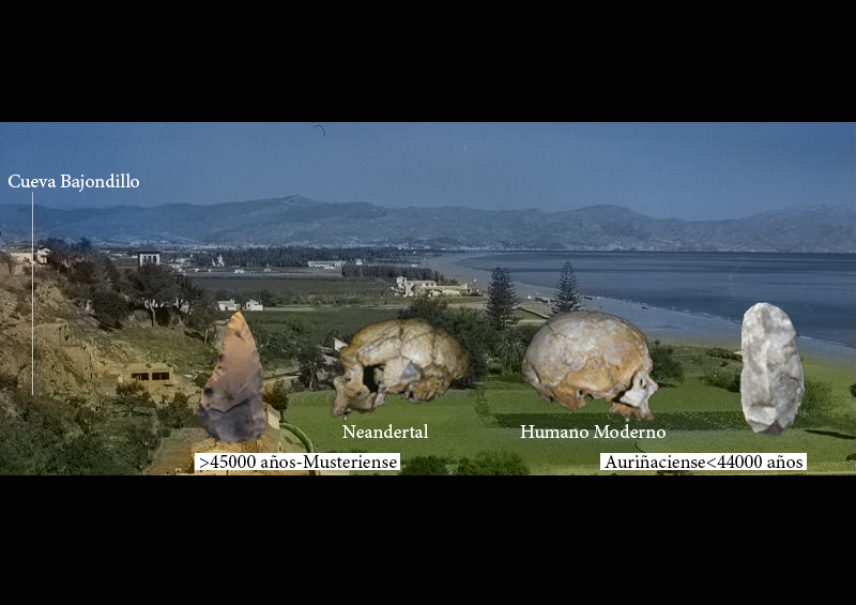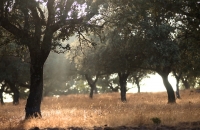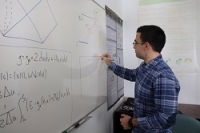An international team has identified the genes that make these plants resistant to the pathogen that attacks crops belonging to the cabbage family all over the world
From Brussels, China or Milan. "Surnames" aside, cabbages are grown nowadays all over the world. Like them, many other plants from the Brassicaceae family such as cauliflower, broccoli, cabbage and even mustard -yes, strange as it may seem and though their tastes are very different, a Brussels sprout and a mustard seed belong to the same family- have a common enemy: white rust, or at least one kind of white rust. Specifically, cabbages are threatened by a disease caused by a pathogen called Albugo candida, which acts exactly like a fungus, though it is not actually a fungus. That is to say, it spreads under the right conditions of humidity and temperature and eats up the nutrients of the plants it attacks.
Modern humans replaced Neanderthals in southern Spain 44,000 years ago
Escrito por UCC+iThe University of Cordoba, in collaboration with the University of Granada, participated in an international study published today in the journal Nature Ecology and Evolution, proving that Neanderthals were replaced by modern humans in southern Iberia 5,000 years before than previously thought
A study carried out in Bajondillo Cave (in the town of Torremolinos, in the province of Malaga) by an international team made up of researchers from Spain, Japan and the U.K. revealed that modern humans replaced Neanderthals 44,000 years ago. This study, published today in the journal Nature Ecology and Evolution and in which University of Cordoba and University of Granada scientists participated, demonstrates that replacing Neanderthals for modern humans in southern Iberia is an early, not late, occurrence, in the context of Western Europe. That is to say it happened 5,000 years before previously thought up until now.
Three University of Cordoba researchers have developed an instrument that reveals adolescence to be a stage of considerable well-being, disproving the myth that it is a period of angst and insecurities
Being a teenager is compatible with feeling good and being satisfied within the context in which one lives and with one’s personal relationships. It could be said that adolescence is a stage at which happiness levels are high and, generally speaking, individuals feel good. These statements sound strange since adolescence is usually associated with facing several risks and insecurities, and during which teens feel like “the whole world is against them” and they commonly complain that “no one understands them.”
Research at the University of Cordoba underscores the importance of water stress on the response of Holm oaks facing Phytophthora infection
Holm oak decline is threatening the sustainability of the dehesas, making it one of the most worrisome problems in the field of forest health for the scientific community. Depsite considering the pathogen Phytophthora cinnamomi the main trigger for this situation, external conditions, such as extreme drought, are also determining factors in the process of dying woodland.
Small family run livestock farms stand out in Cordoba’s dehesa
Escrito por UCC+iA University of Cordoba study maps out the characteristics of dehesa farms associated with feeding cooperatives in Los Pedroches and Upper Guadiato
A dehesa is a distinctive ecosystem in the Mediterranean areas of the Iberian Peninsula labeled High Nature Value due to the value of its ecosystem services and its role in conserving biodiversity. An image of vast land sprinkled with holm oaks and cork oaks where extensive farm animals graze is the most common one that comes to mind when describing the topic of the dehesa, but what occurs when we zoom in on this image?
A mathematical model allows for finding black holes in regions of space where traditional methods fail to do so
Escrito por UCC+iA collaborative research project with the Universities of Cordoba and Malaga as well as the Federal University of Santa Catarina in Brazil, has developed a new formula capable of broadening the knowledge of these phenomenons
The mathematical explanation of the universe has had theoretical physics on the ropes at times. For instance, four years ago, Professor Laura Mersini-Houghton from the University of North Carolina at Chapel Hill mathematically proved the impossibility of the existence of phenomenons such as black holes. Nevertheless, gravitational waves generated by two black holes merging were detected for the first time recently (the study won the Nobel Prize in Physics in 2017).

Far from abandoning the idea of their existence, the scientific community continues to debate how to mathematically explain these phenomenons. And this search is where we can find the latest contribution realized by a team of mathematicians at the University of Cordoba (Jonatan Herrera), the University of Malaga (José Luis Flores) and the Federal University of Santa Catarina in Brazil (Ivan P. Costa e Silva). Their work was recently published in the Journal of High Energy Physics.
Herrera, Flores and Silva propose a new mathematical model that is broader than the classic approaches commonly used in Theoretical Physics, so there is an increase in the possibilities of characterizing kinds of black holes in different regions. These are analyzed by means of sophisticated mathematical models, which translates into being able to define the wide variety of possible kinds of black holes, which is not an easy task. In the last fifty years since Albert Einstein formulated his first theories on black holes, there have been many ways of translating how to mathematically understand black holes, but the novelty that this research published by these three authors presents lies in the fact that it is a general model, “broader than those in existence up to now, and therefore allows for increasing the study’s scope which lets us examine the presence of black holes in new regions,” explains Professor Herrera.
The published mathematical model, which conjugates different formulas on spacetime, is based on the idea that determining what region a black hole belongs to can be done by determining what regions of space “escape” from said black hole. What Herrera, Flores and Silva have done is define a far-off region of an “infinite light” black hole as Herrera explains, that allows for determining from what regions in space it is possible to move away as much as one wants from the center of a black hole.
Silva, IPCE; Flores, JL; Herrera, J. A novel notion of null infinity for c-boundaries and generalized black holes. JOURNAL OF HIGH ENERGY PHYSICS DOI: 10.1007/JHEP09(2018)123







